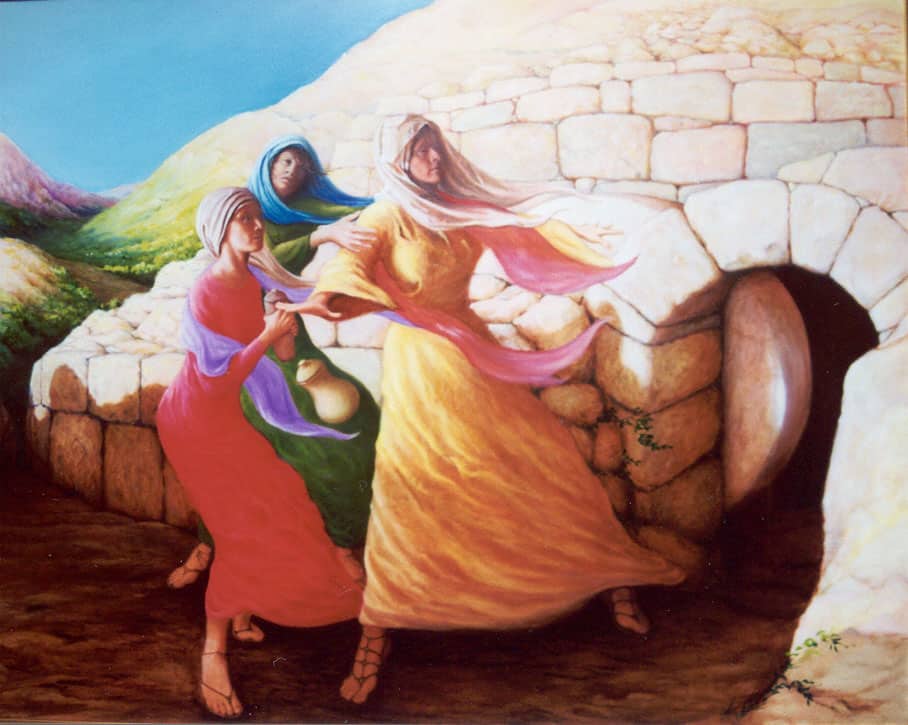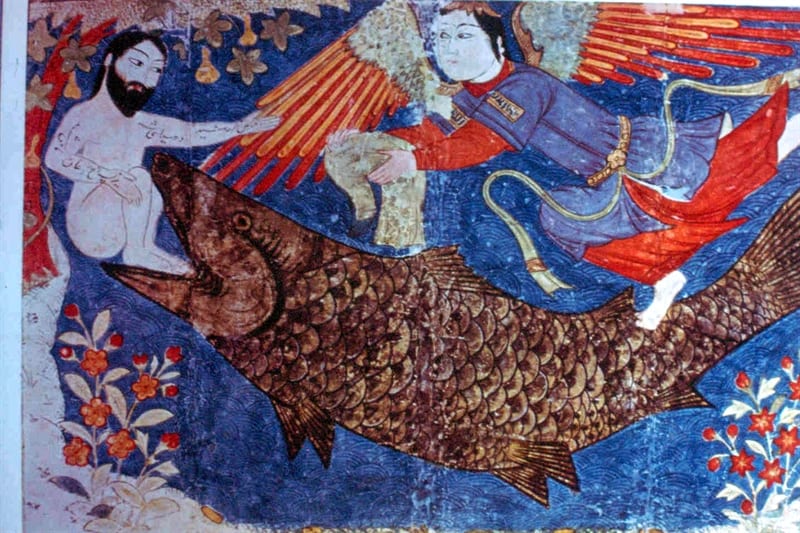And they went out and fled from the tomb, for trembling and astonishment had seized them, and they said nothing.
Most general Bible readers have the mistaken impression that Matthew, the opening book of the New Testament, must be our first and earliest Gospel, with Mark, Luke, and John following. The assumption is that this order of the gospels is a chronological one, when in fact it is a theological one. Scholars and historians are almost universally agreed that Mark is our earliest gospel–by several decades, and this insight turns out to have profound implications for our understanding of the “Jesus story” and how it was passed down to us in our New Testament gospel traditions.

The problem with the gospel of Mark for the final editors of the New Testament was that it was grossly deficient. First it is significantly shorter than the other gospels–with only 16 chapters compared to Matthew (28), Luke (24), and John (21). But more important is how Mark begins his gospel and how he ends it.
He has no account of the virgin birth of Jesus–or for that matter, any birth of Jesus at all. In fact, Joseph, husband of Mary is never named in Mark’s gospel at all–and Jesus his called a “son of Mary,” see my previous post on the complexities of the family of Jesus here. But even more significant is Mark’s strange ending. He has no appearances of Jesus following the visit of the women on Easter morning to the empty tomb!
Like the other three gospels Mark recounts the visit of Mary Magdalene and her companions to the tomb of Jesus early Sunday morning. Upon arriving they find the blocking stone at the entrance of the tomb removed and a young man–notice–not an angel–tells them:
“Do not be alarmed. You seek Jesus of Nazareth, who was crucified. He has risen; he is not here. See the place where they laid him. But go, tell his disciples and Peter that he is going before you to Galilee. There you will see him, just as he told you.” And they went out and fled from the tomb, for trembling and astonishment had seized them, and they said nothing (Mark 16:6-8)
And there the gospel simply ends!
Mark gives no accounts of anyone seeing Jesus as Matthew, Luke, and John later report. In fact, according to Mark, any future epiphanies or “sightings” of Jesus will be in the north, in Galilee,not in Jerusalem.
This original ending of Mark was viewed by later Christians as so deficient that not only was Mark placed second in order in the New Testament, but various endings were added by editors and copyists in some manuscripts to try to remedy things. The longest concocted ending, which became Mark 16:9-19, became so treasured that it was included in the King James Version of the Bible, favored for the past 500 years by Protestants, as well as translations of the Latin Vulgate, used by Catholics. This meant that for countless millions of Christians it became sacred scripture–but it is patently bogus. You might check whatever Bible you use and see if the following verses are included–the chances are good they they will be, since the Church, by and large, found Mark’s original ending so lacking. Here is that forged ending of Mark:
Now when he rose early on the first day of the week, he appeared first to Mary Magdalene, from whom he had cast out seven demons. She went and told those who had been with him, as they mourned and wept. But when they heard that he was alive and had been seen by her, they would not believe it. After these things he appeared in another form to two of them, as they were walking into the country. And they went back and told the rest, but they did not believe them. Afterward he appeared to the eleven themselves as they were reclining at table, and he rebuked them for their unbelief and hardness of heart, because they had not believed those who saw him after he had risen. And he said to them, “Go into all the world and proclaim the gospel to the whole creation. Whoever believes and is baptized will be saved, but whoever does not believe will be condemned. And these signs will accompany those who believe: in my name they will cast out demons; they will speak in new tongues; they will pick up serpents with their hands; and if they drink any deadly poison, it will not hurt them; they will lay their hands on the sick, and they will recover. So then the Lord Jesus, after he had spoken to them, was taken up into heaven and sat down at the right hand of God. And they went out and preached everywhere, while the Lord worked with them and confirmed the message by accompanying signs.
Even though this ending is patently false, people loved it and to this day conservative Christians regularly denounce “liberal” scholars who point out this forgery, charging that they are trying to destroy “God’s word.”
The evidence is clear. This ending is not found in our earliest and most reliable Greek copies of Mark. According to Bruce Metzger, “Clement of Alexandria and Origen [early third century] show no knowledge of the existence of these verses; furthermore Eusebius and Jerome attest that the passage was absent from almost all Greek copies of Mark known to them.” [1]Bruce Metzger, A Textual Commentary on the Greek New Testament, 2nd edition, (Hendrickson Publishers, 2005), 123. Metzger also states: “The last twelve verses of the commonly received text of Mark … Continue reading The language and style of the Greek is clearly not Markan, and it is pretty evident that what the forger did was take sections of the endings of Matthew, Luke and John (marked respectively in red, blue, and purple above) and simply create a “proper” ending.
Even though this longer ending became the preferred one, there are two other endings, one short and the second an expansion of the longer ending, that also show up in various manuscripts:
[I] But they reported briefly to Peter and those with him all that they had been told. And after these things Jesus himself sent out through them, from east to west, the sacred and imperishable proclamation of eternal salvation.
[II] This age of lawlessness and unbelief is under Satan, who does not allow the truth and power of God to prevail over the unclean things of the spirits [or, does not allow what lies under the unclean spirits to understand the truth and power of God]. Therefore reveal your righteousness now’ – thus they spoke to Christ. And Christ replied to them, ‘The term of years of Satan’s power has been fulfilled, but other terrible things draw near. And for those who have sinned I was handed over to death, that they may return to the truth and sin no more, in order that they may inherit the spiritual and incorruptible glory of righteousness that is in heaven.
I trust that the self-evident spuriousness of these additions is obvious to even the most pious readers. One might in fact hope that Christians who are zealous for the “inspired Word of God” would insist that all three of these bogus endings be recognized for what they are–forgeries.
So that said, what about the original ending of Mark? Its implications are rather astounding for Christian origins and trying to determine what really happened Easter morning. Notice the following implications.
1. Since Mark is our earliest gospel, written according to most scholars around the time of the destruction of Jerusalem by the Romans in 70 CE, or perhaps in the decade before, we have strong textual evidence that the first generation of Jesus followers were perfectly fine with a gospel account that recounted no appearances of Jesus. We have to assume that the author of Mark’s gospel did not consider his account deficient in the least and he was either passing on, or faithfull promoting, what he considered to be the authentic gospel. What most Christians do when they think about Easter is ignore Mark. Since Mark knows nothing of any appearances of Jesus as a resuscitated corpse in Jerusalem, walking about, eating, and showing his wounds, as recounted by Matthew, Luke, and John, those stories are simply allowed to “fill in” for his assumed deficiency. In other words, no one allows Mark to have a voice. What he lacks, ironically, serves to marginalize and mute him!
2. Alternatively, if we decide to listen to Mark, who is our first gospel witness, what we learn is rather amazing. In Mark, the last night of Jesus’ life, he had told his intimate followers following their meal, “But after I am raised up, I will go before you to Galilee” (Mark 14:28). What Mark believes is that Jesus has been “lifted up” or “raised up” to the right hand of God and that the disciples would “see” him in Galilee. Mark knows of no accounts of people encountering the revived corpse of Jesus, wounds and all, walking around Jerusalem. His tradition is that the disciples experienced their epiphanies or “sightings” of Jesus once they returned to Galilee after the eight day Passover festival and had returned to their fishing in despair. This is precisely what we find in the Gospel of Peter, where Peter says:
Now it was the final day of the Unleavened Bread; and many went out returning to their home since the feast was over. But we twelve disciples of the Lord were weeping and sorrowful; and each one, sorrowful because of what had come to pass, departed to his home. But I, Simon Peter, and my brother Andrew, having taken our nets, went off to the sea. And there was with us Levi of Alphaeus whom the Lord …
You can read more about this fascinating “lost” Gospel of Peter here, but this ending, where the text happens to break off, is most revealing. What we see here is precisely parallel to Mark. The disciples returned to their homes in Galilee in despair, resuming their occupations, and only then did they experience “sightings” of Jesus. Strangely, this tradition shows up in an appended ending to the gospel of John–chapter 21, where a group of disciples are back to their fishing, and Matthew knows the tradition of a strange encounter on a designated mountain in Galilee, where some of the eleven apostles even doubt what they are seeing (Matthew 28:16-17).
The faith that Mark reflects, namely that Jesus has been “raised up” or lifted up to heaven, is precisely parallel to that of Paul–who is the earliest witness to this understanding of Jesus’ resurrection. Paul noteably parallels his own visionary experience to that of Peter, James, and the rest of the apostles. What this means is that when Paul wrote, in the 50s CE, this was the resurrection faith of the early followers of Jesus! Since Matthew, Luke, and John come so much later, and clearly reflect the period after 70 CE when all of the first witnesses were dead–including Peter, Paul, and James the brother of Jesus, they are clearly 2nd generation traditions and should not be given priority.
Mark begins his account with the line “The Gospel of Jesus Christ the Son of God” (Mark 1:1). Clearly for him, what he subsequently writes is that “Gospel,” not a deficient version thereof that needs to be supplemented or “fixed” with later alternative traditions about Jesus appearing in a resuscitated body Easter weekend in Jerusalem.
Finally, what we recently discovered in the Talpiot tomb under the condominium building, not 200 feet from the “Jesus family” tomb, offers a powerful testimony to this same kind of early Christian faith in Jesus’ resurrection. On one of the ossuaries, or bone boxes in this tomb, is a four line Greek inscription which I have translated as: Wondrous Yehovah lift up–lift up! And this is next to a second ossuary representing the “sign of Jonah” with a large fish expelling the head of a human stick figure, recalling the story of Jonah. In that text Jonah sees himself as having passed into the gates of Sheol or death, from which he utters a prayer of salvation from the belly of the fish: “O Yehovah my God, you lifted up my life from the Pit!” (Jonah 2:6). It is a rare thing when our textual evidence seems to either reflect or correspond to the material evidence and I believe in the case of the two Talpiot tombs, and the early resurrection faith reflected in Paul and Mark, that is precisely what we have. [2]We offer a full exposition of these important discoveries in our recent book, The Jesus Discovery. The book is a complete discussion of both Talpiot tombs with full documentation, with full … Continue reading









Comments are closed.